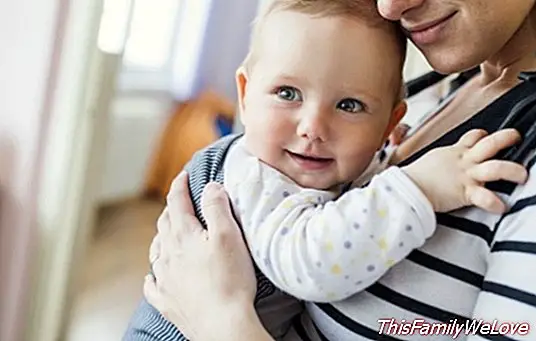Baby carriers: this is how you should use them

The baby carrier or slings are objects used since antiquity in different cultures. Forgotten for a long time in our society, today is again very fashionable and are increasingly used by both mothers and fathers. Now, how are they used? Pediatricians warn that doing it safely avoids accidents.
"It is important that the use of these systems be safe to avoid accidents", insist from the Spanish Association of Pediatrics in Primary Care, which recognize that this object is increasingly used since many parents "consider that this way of carrying children provides them with a greater union of all kinds with their children. "
To warn about risks of baby carriers If they are not used well, pediatricians mention that in the last 20 years more than 20 fatal accidents have been reported due to their misuse. "Regardless of the type of baby carrier that is used, strict rules must be followed when transporting children with these harnesses," they reiterate.
The dangers of baby carriers
Pediatricians explain that baby slings can cause three different types of suffocation in infants in the first months:
1.- By understanding in the nose and mouth of the infant against the body of the adult who holds it in the sling. This causes his breathing to be blocked and, therefore, causes the baby to suffocate.
2.- If the baby's head is turned forward it can cause the chin to touch the chest, obstructing the airway and limiting the oxygen supply. This makes the baby unable to cry and increases the chances of suffocation.
3.- If the face of the baby is covered with the fabric, the child can breathe again his own air provoking a situation similar to that of the previous point.
When NOT to use baby carriers
- In children under 4 months.
- Twins.
- Premature
- Children of low birth weight.
- Children with respiratory tract infections.
How to use the baby carrier correctly
Despite the dangers, the baby carrier is not contraindicated, just take into account the following recommendations of the AEPED:
- The child's face should always remain visible.
- Monitor your position frequently.
- Watch that the child breathes freely.
- Avoid that the face rests against the body of the adult.
- Do not use this transport system in a vehicle.
- Always use baby carrier systems appropriate for the weight and age of the baby.
- The fabric, the seams, the presence of folds and the snaps or zippers of the device must be checked daily.
- You should not use the sling if you are going to practice certain activities that carry a risk of falling (climbing hills, riding a horse, riding a bicycle, skating, etc.)
- Avoid sliding areas that may cause falls.
- In the case of back baby carriers, check that the child can not pick up dangerous things.
- Do not cook with the child placed in the baby carrier, because of the risk of burns.
Angela R. Bonachera




